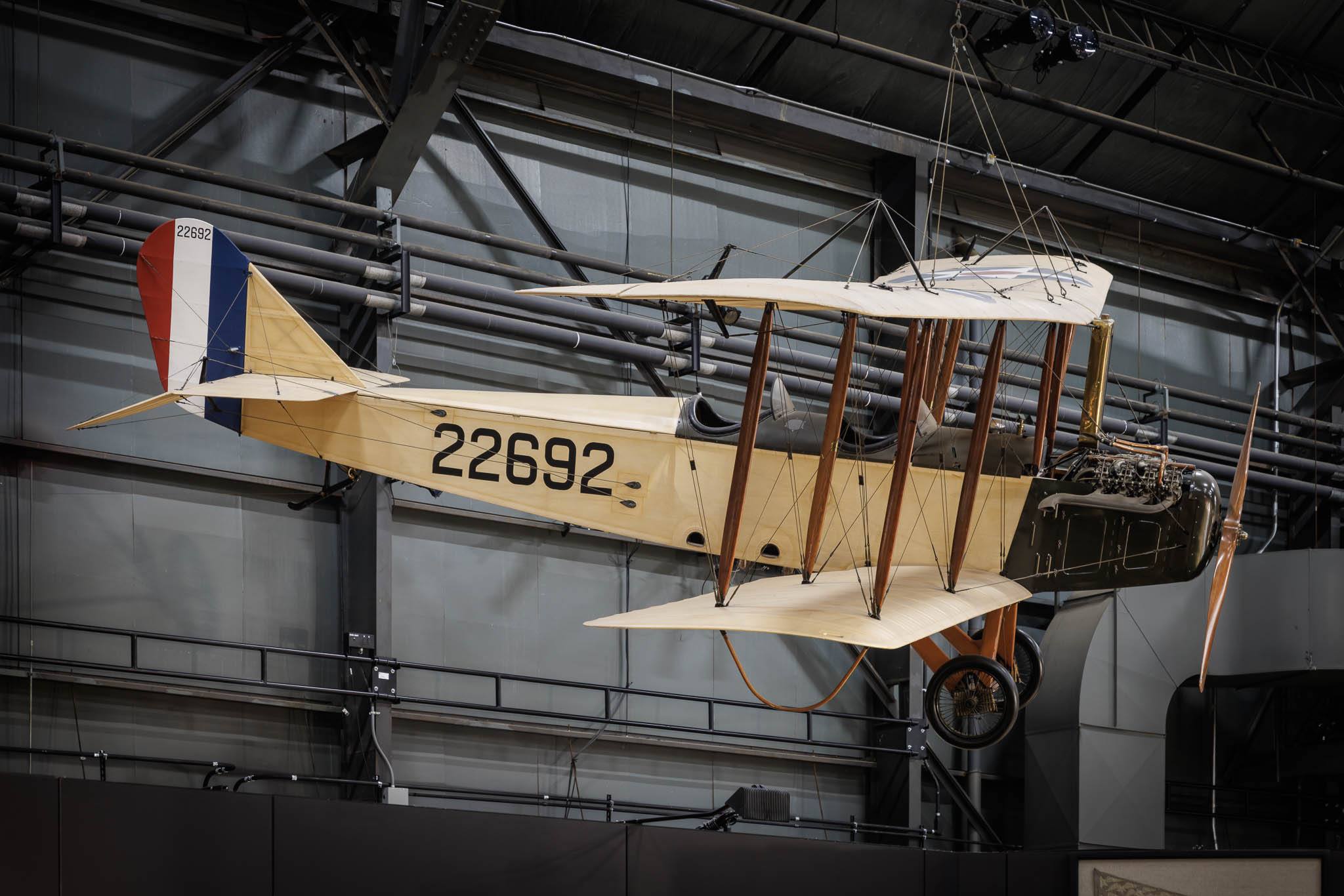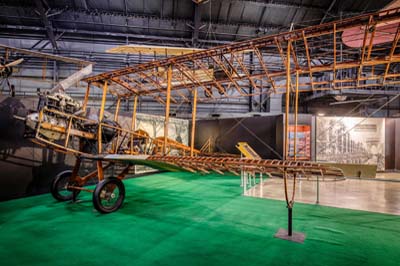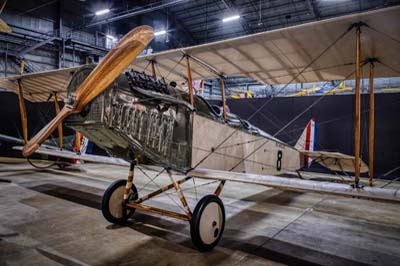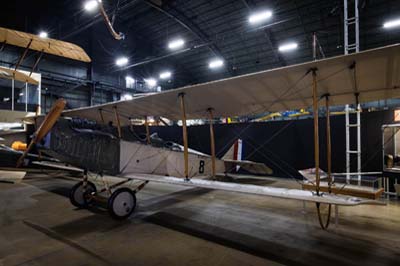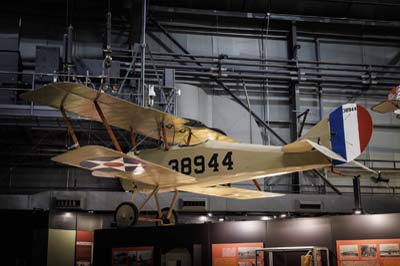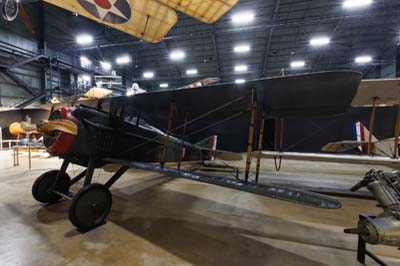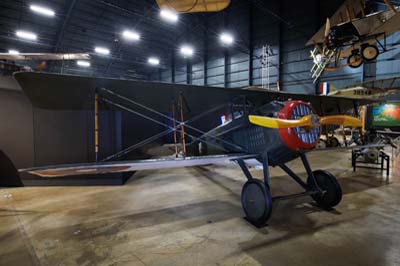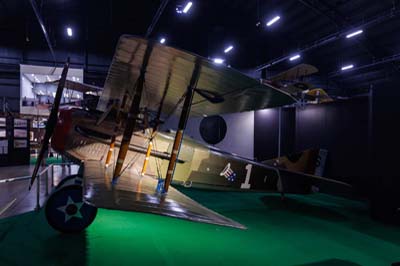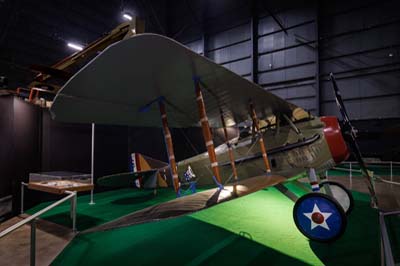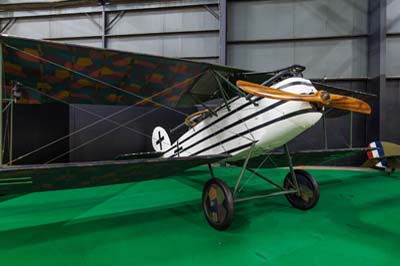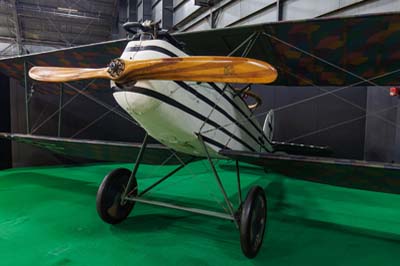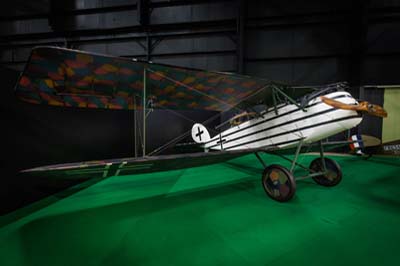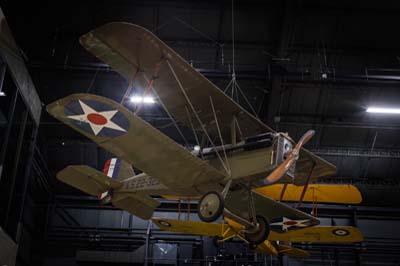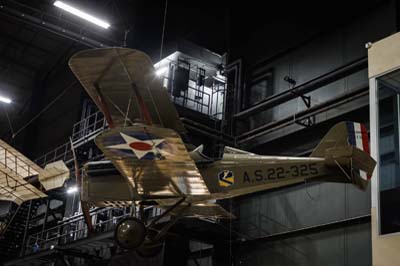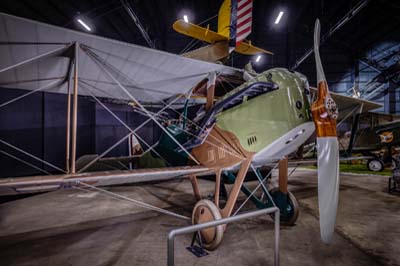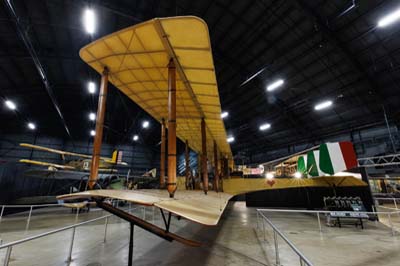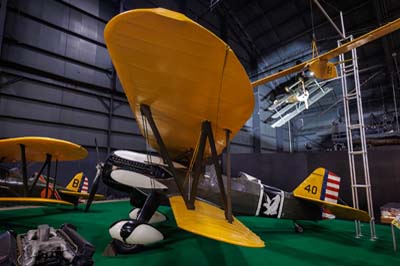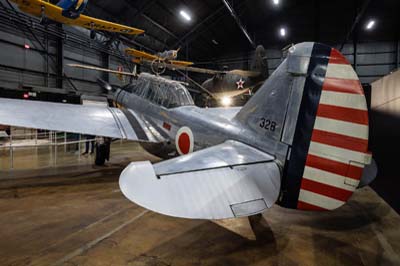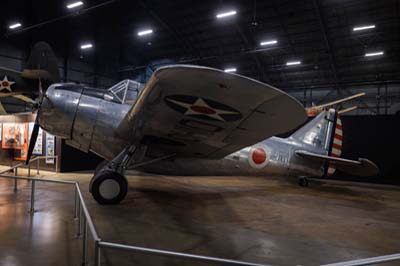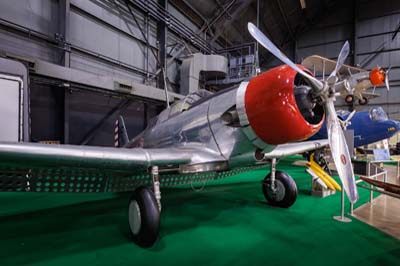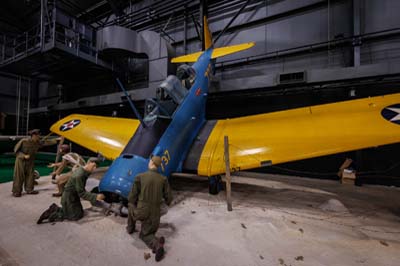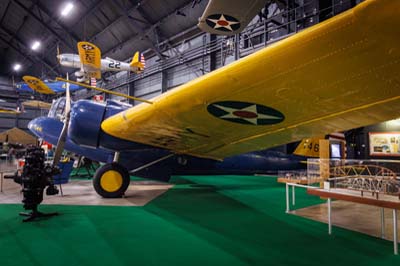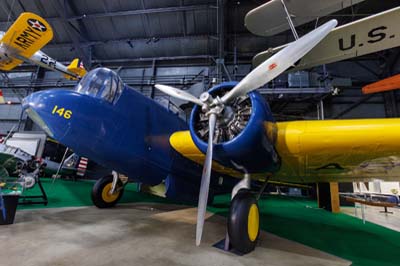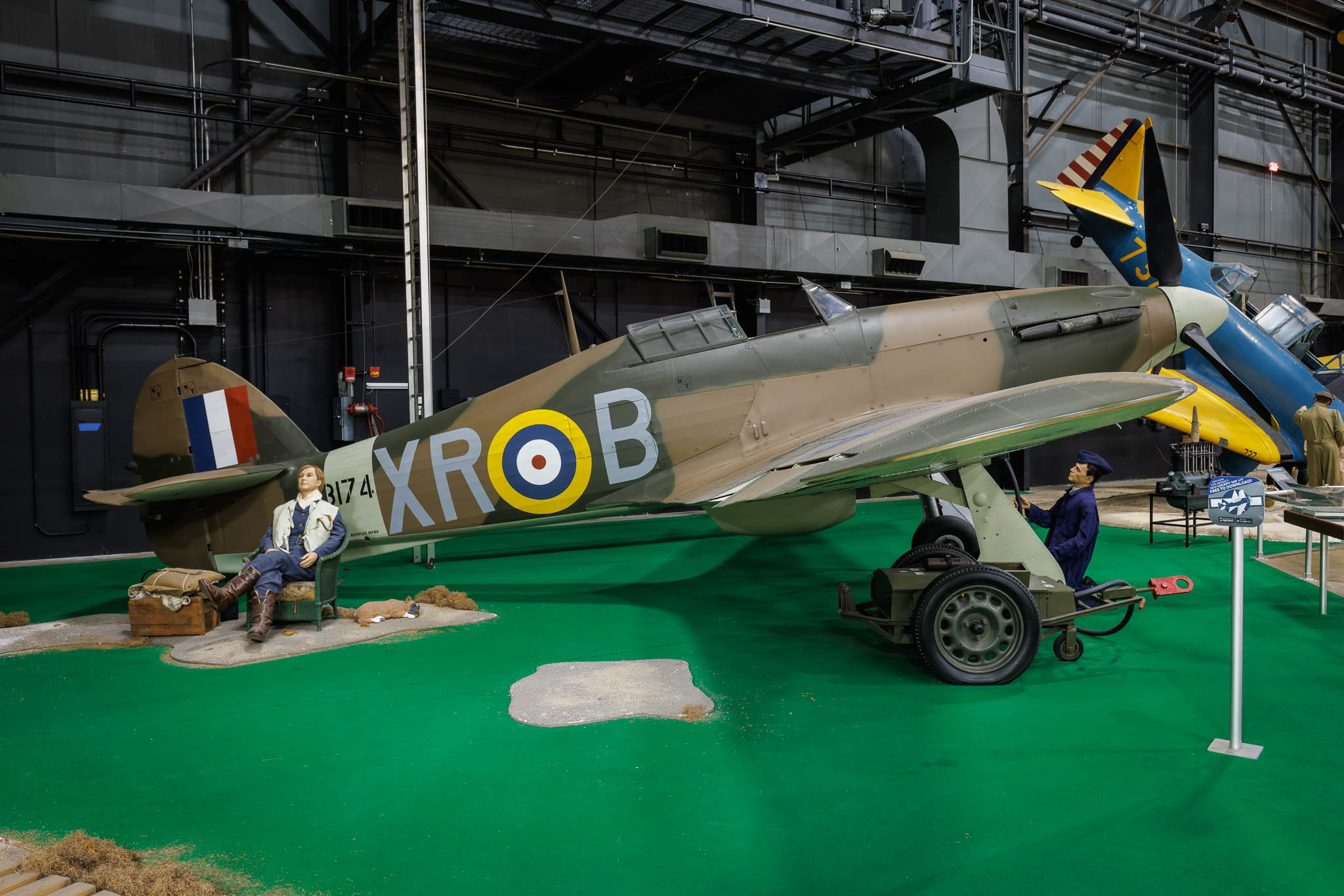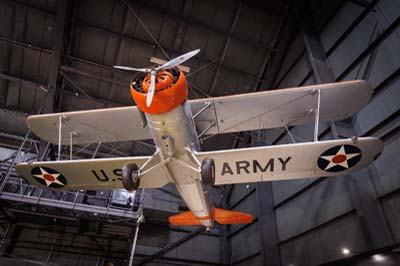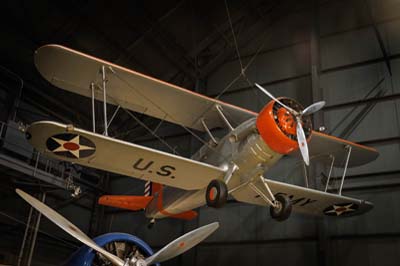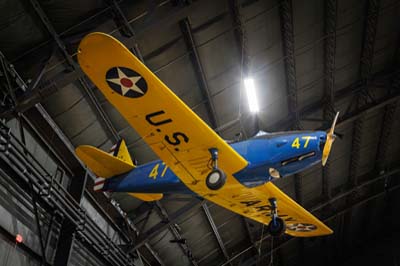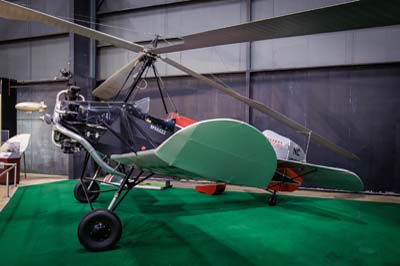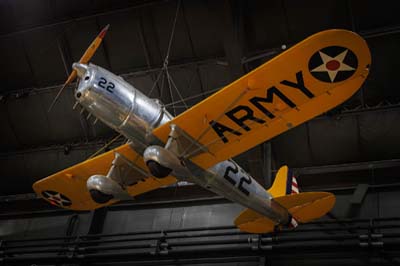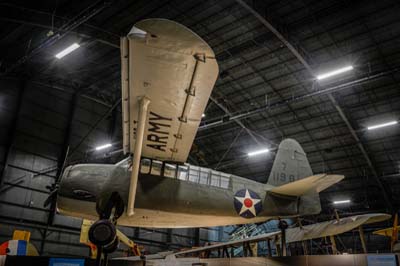National Museum of the US Air Force
Wright-Patterson Air Force Base, Dayton, Ohio
July 23 to 25, 2023
|
The National Museum of the United States Air Force is the official museum of the United States Air Force located at Wright-Patterson Air Force Base, Dayton, Ohio. Formed in 1923 the NMUSAF is the oldest and largest military aviation museum in the world, with more than 350 aircraft on display in four very large connecting hangars. The permanent staff of almost 100 is not only responsible for the aircraft on display and those in the restoration and storage facility on Wright-Patterson AFB but is also 2,400 aircraft on loan to 772 heritage locations in the US and abroad.
Roberta Carothers, Curator of the NMUSAF says, "We don't get to just focus on this one location, we have to run a worldwide heritage programme." Carothers is very appreciative of the 500 museum volunteers ensure that the 750,000 visitors to the NMUSAF each year have the best possible experience, "We rely on heavily on our volunteers just to open the doors everyday, they are amazing, they have a breadth of knowledge that some of us could just never have, because they actually worked on these aircraft."
With 2,400 aircraft in its heritage inventory the USAF is keen to preserve its aircraft for future generations to appreciate. Carothers heads a committee which meets every two weeks to discuss the inventory and make the decisions as to what goes on display and what resources are used to restore its historic aircraft and 130,000 artifacts. The aircraft on display are chosen based on their individual service histories. "We have very targeted stories; we really want an airframe that has very significant provenance and has operated for decades."
says Carothers. She was careful to emphasise that it is not just the aircraft they consider for preservation and display but the aircrew and servicemen that worked with them.
The visitor profiles are also considered, World War Two veterans and even Vietnam veterans and their families and were a substantial proportion of the visitors and now obviously falling in their numbers as every year goes by. The museum has to focus on attractions for a younger audience with various initiatives to attract school field trips along with theme nights for over 21s which includes for and alcohol.
Better displays
The museum is transitioning away from fluorescent and halogen lighting to LED lighting. "We know LEDs do not emit harmful UV rays, ambient lighting will cause damage over time" They are also working on a light conservation project, which by reducing and evening out the amount of light shining down to protect the exhibits will also save money. The museum is free to enter and is open seven days a week. From a photographers point of view the lighting is generally very good and unobtrusive. The information boards are numerous but I am told they try to keep one side of each aircraft free from 'clutter' so that photographers can at least get a clean shot from one side.
The four hangars are sub-divided into aircraft galleries named; Early Years Gallery, World War Two Gallery, Korean War Gallery, Southeast Asia War Gallery, Cold War Gallery, Research & Development Gallery, Global Reach Gallery and the Presidential Gallery. There is also the outside Air Park. Not open to the public is the Restoration and Storage facility located across the military site.
|
| Standard J-1 (22692) a two-seat basic trainer two-bay biplane produced in the United States from 1916 to 1918. |
Left to right: Standard J-1 (?).
Curtis JN-4D 'Jenny' (2805 marked 'SC4037 8'). The Curtis JN 'Jenny' is a series of biplanes built by the Glenn Curtiss Aeroplane Company of Hammondsport, New York, later the Curtiss Aeroplane and Motor Company, produced as a training aircraft for the US Army and US Navy. Production began in 1915 and became North America's most well known aircraft of World War One, training 95% of student pilots in the US and Canada. A Jenny was used for the world's first radiotelephony from one aircraft to another and from ground to air and vice versa in test conducted in July and August 1917. Also, a Jenny was the first utilised for the US Air Mail in May 1918. Around 35 Curtis Jennys survive today from a total of 6,813 built.
Thomas-Morse S-4C Scout (SC38944 registered N7695). Designed by Benjamin Douglas Thomas—also the designer of the Curtiss JN-4D "Jenny", the Thomas-Morse S-4C was produced by the Ithaca (from 1913) and Bath (from 1914), New York based Thomas-Morse companies, with approximately 447 aircraft built. An advanced trainer operated by both the U.S. Army and U.S. Navy, it was nicknamed the "Tommy" by its pilots, carried a single machine gun, and had a top speed of about 97 mph. The company was taken over by Consolidated Aircraft Corporation in 1929 and dissolved in 1935, and today roughly ten S-4Cs are known to survive. |
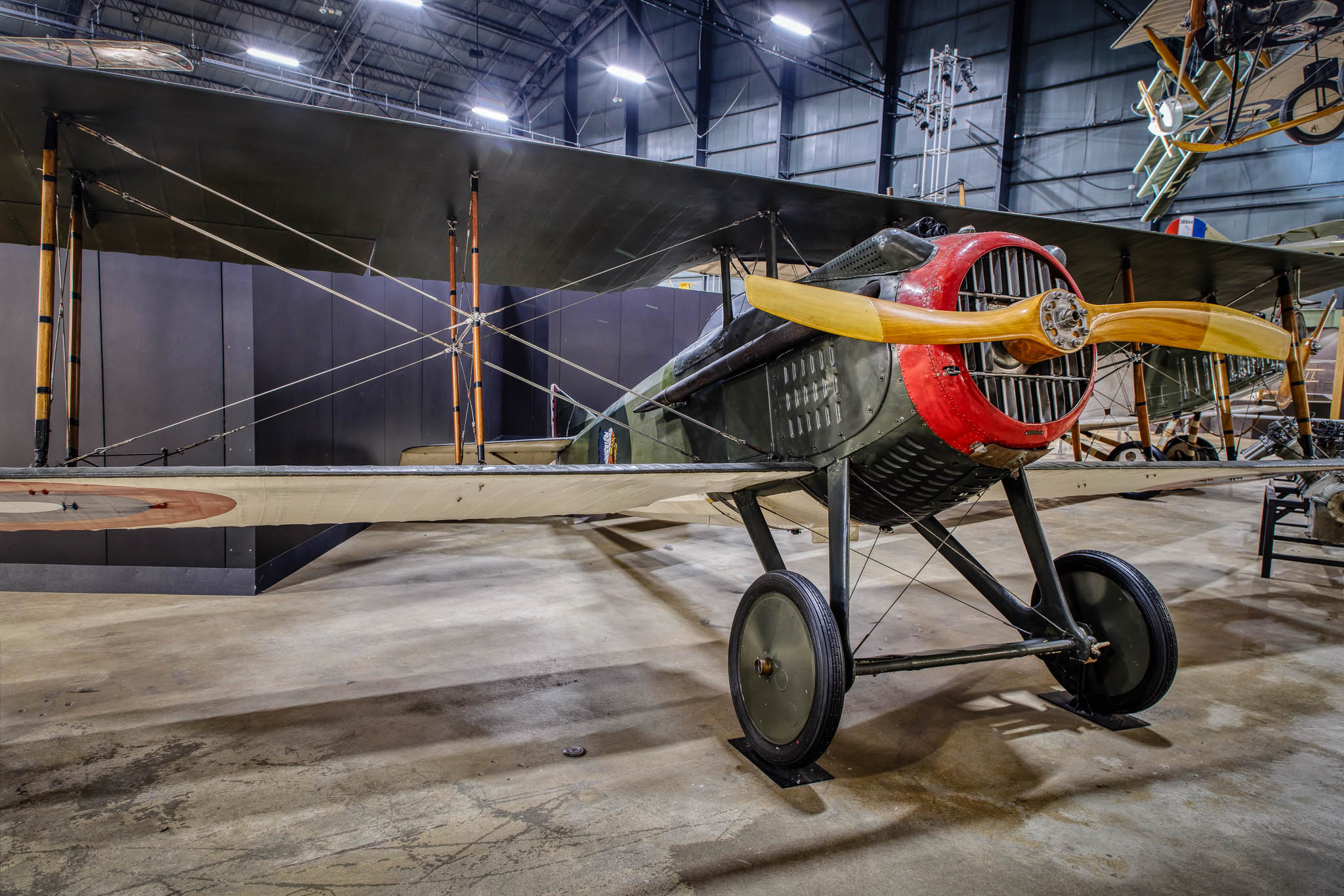 |
Left to right: Societe Pour lAviation et ses Derives (SPAD) VII (USAAS AS94099 marked 'S3720'). Entered service with the United States Army Air Service in 1918. Restored as 'S3720 Lafayette Escadrille' from 1962 to 1966 and flown by the 1st Fighter Wing, Selfridge Air Force Base. To NMUSAF in 1971.
Societe Pour lAviation et ses Derives (SPAD) XIII C1 (S4523 '1' registered N2030A). Built by the Kellner et ses Fils piano works, Paris. Restored by 1956 and painted in the markings of Captain Edward Rickenbacker who with the 94th Pursuit Squadron was Americas highest scoring ace of World War One with 26 victories. To NMUSAF in 1996. |
| Left to right: Halberstadt CL.IV (8203/18). It was built in 1918 for the Imperial German Air Service and operated as an interceptor against Allied night bombing raids and served as a night bomber against troop concentrations and airfields near the front lines. World War One flying ace Paul Strahl bought this and two other aircraft from the Reparation Commission in 1920 to be used for spares by his aviation company Luftverkehr Strahle. They remained in storage at Schorndorf until the 1950s, when Strahl started a restoration of this CL.IV in a vain attempt to get it airworthy. In 1982 it was brought to the United States and acquired by the National Museum of the United States Air Force in 1984. It was jointly restored by the Museum fur Verkehr und Technik in Berlin and, the Smithsonian Institution's National Air and Space Museum and the NMUSAF. It carries the markings of the squadron leader of the Schlachtstaffel 21 which engaged elements of the US Army 94th and 95th Aero Squadrons in July 1918 during the Chateau Thierry battle. It was put on display in 2004. |
Left to right: RAF SE.5E Scout (AS22-325) built in the United States in 1922.
Packard Lusac II (SC42133).
Caproni Ca.36 (Ca3 11504) built in 1916. |
Left to right: Curtiss P-6E (32-261 '40' previously 32-240).
Boeing P-12E (31-559 'B').
North American O-47B (39-112 marked '37-328' registered N73722). The museum acquired it in 1978, The 179th Consolidated Aircraft Maintenance Squadron, Ohio Air National Guard, Mansfield restored the aircraft in the markings of an O-47A of the 112th Observation Squadron of the Ohio National Guard. Only four example survive. |
Left to right: Northrop A-17A (36-207 'AC-71') Delivered to the Air Corps and assigned to Barksdale Field in 1937, it is the only surviving A-17 series aircraft.
North American BT-9C (38-227 '737' ex RCAF NA-64 3417).
Martin B-10 (146 ex Argentina Navy 0080). |
| Hawker Hurricane Mk.II (RCAF 5390 marked 'Z3174 XR-B'). |
Left to right: Douglas O-38F (33-324).
Fairchild PT-19A (42-34023 marked '41-14666 47 13AD' registered N1070N). |
Left to right: Kellett K-2 Autogiro (NC10767).
Ryan ST-A (YPT-16) (NC18922 marked '40-44 22').
Curtiss O-52 Owl (40-2763 11907). In 1940 the US Army Air Corps ordered 203 O-52s for observation duties |
